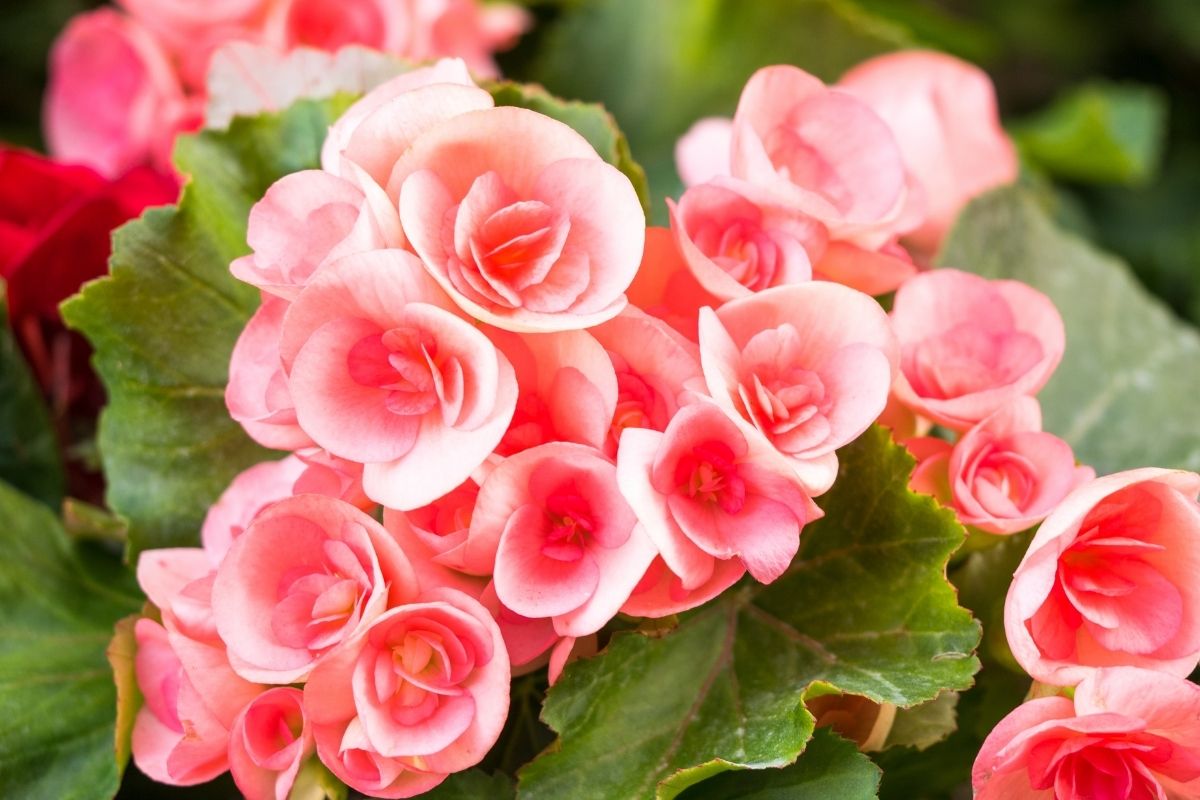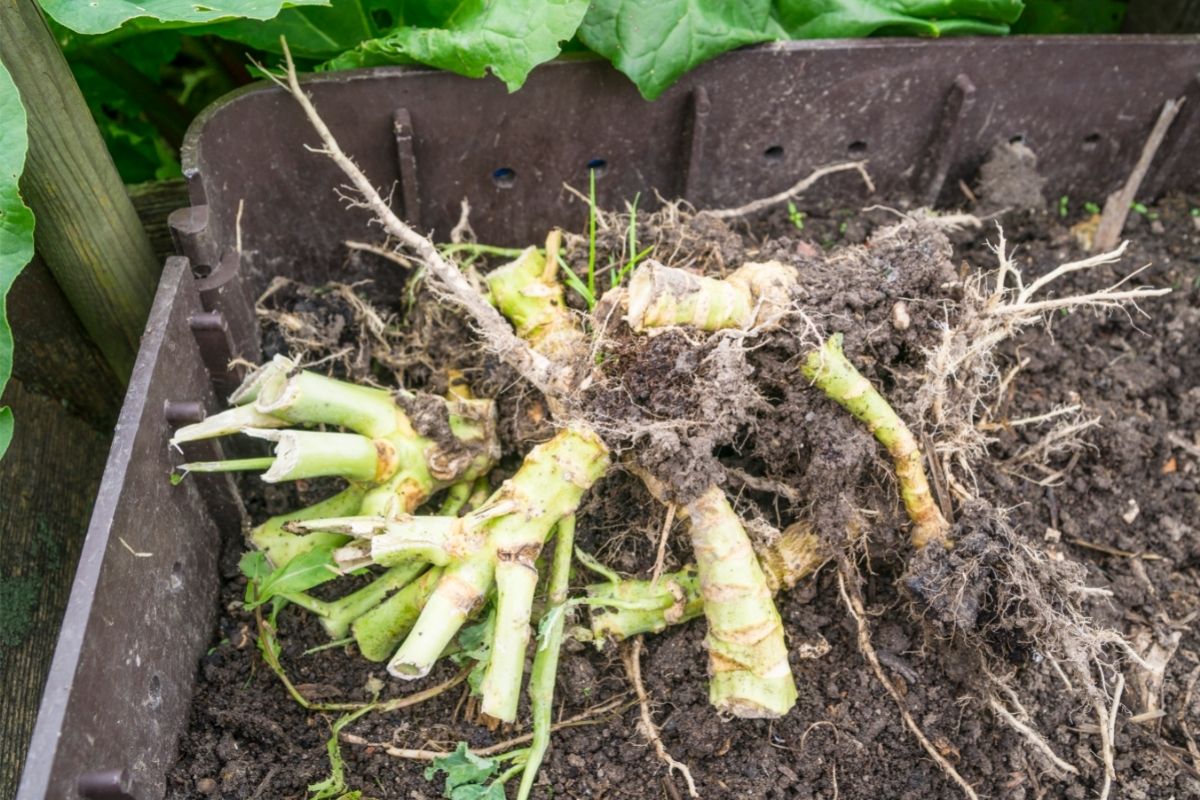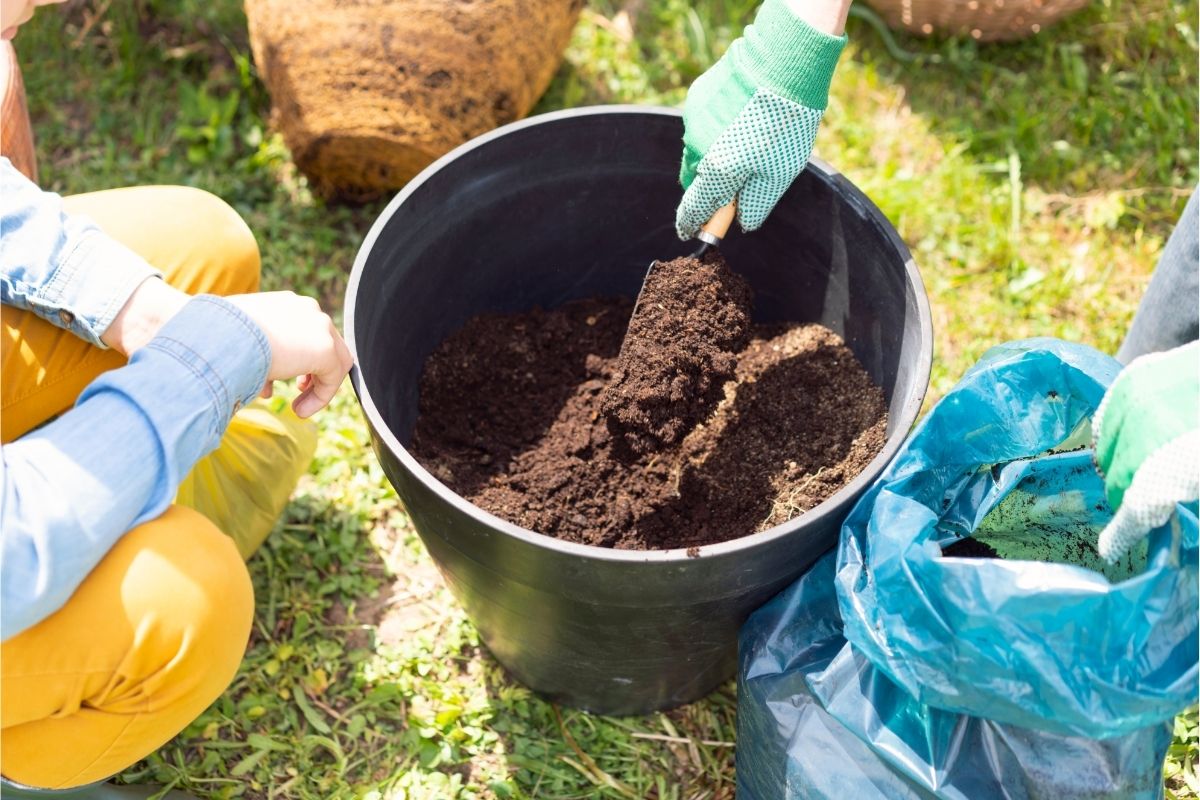Begonias are beautiful plants that thrive in subtropical and tropical climates. There are different ways to know how to propagate Begonias with over 2,000 different types of begonia as each has their own unique flowers.
From red, and pink, to yellow, begonias are nothing short of stunning. Flowers aside, many of these plants also have leaves that will leave you in awe.
Because of this plant’s naturally attractive appearance and easy care, begonias are popular plants for both indoor and outdoor areas.
If you have fallen in love with your begonia and would love nothing more than to grow some more – you can!

These plants can be propagated pretty easily, which means you can create as many as you like over the years!
To learn how to propagate your begonia, keep reading! Here, we are going to go through everything you need to know to create your begonia army.
Begonia Propagation
The first thing you need to know about begonia propagation is that it’s pretty easy and straightforward.
There are a few different methods you can try, but ultimately you will have to figure out what works for you. Each method has its advantages and disadvantages, but they all get good end results.
You can either propagate your begonia through stem cuttings, leaf cuttings, rhizomes, and seeds.
We will go through each of these methods below, along with a step-by-step guide for how to successfully do them.
Stem Cuttings
If you are going to propagate via the cutting method, you will need a begonia cutting. To do this, you will need to cut off part of a stem from a healthy parent plant.
The stem you cut from must-have at least a few leaves on it, and should be at least two inches long.
Stem cuttings from begonias are extremely straightforward, as the plants have stems that are cane-like. You may choose to take the cutting at a 45 or 90-degree angle.
Cuttings taken at a 45-degree angle allow for more root growth, but increases the chances of disease.
Because disease is rarely an issue in home gardens, taking a 45-degree cutting should be safe to do.
Remember that each cutting needs to have some leaves on it, or else it is very unlikely to work. Because of this, you should limit the number of cuttings you take from the mother plant.
You do not want to do too much damage to it by getting lots of cuttings at once.
Leaf Cuttings
You may decide to propagate via leaf cuttings. This is another incredibly easy method as all it requires is a healthy leaf from the parent plant.
Cut the leaf off at the point where the leaf and main stem meet, and that’s all you need! If you were to only take the leaf itself, without a stem, the propagation would not work.
Rhizomes

Rhizomes are small roots produced from underground roots called corms. They are often used to help new plants form better in the ground.
Rhizomatous begonias can grow incredibly easily, as long as you can get a rhizome cutting with nodes that is at least two inches. You do not need to have any leaves, though they would help.
Seeds
Begonia seeds are very small, but they are a very easy way to propagate. All you need to do is get the seeds from the parent plant, or just buy some.
There is nothing special about it, and growing these are very easy!
Propagation Methods
There are two main propagation methods to try – water propagation, and soil propagation. Both are very easy and yield good results, but many people prefer water.
This is because the water method enables gardeners to watch their plants develop and grow roots. This method isn’t suitable for everything, though.
For seeds and rhizomes, you will most likely want to use the soil method. For the other two methods with the leaf and stem cuttings, you can use either method. We will go through both of these below.
Water Method
The water propagation method works by the cutting being left to sit in water for several weeks or months until it grows enough roots to be planted.
Many favor this method because it allows you to watch the cutting grow roots.
Not only that, but this method is safer because the cutting doesn’t come into contact with soil or potting mix for some time, which has bacteria.
Although it rarely happens, cuttings can get bacterial infections when soil is used.
To propagate using the water method, simply follow the steps outlined below:
- Get your cutting
- Allow the cutting to sit out for up to three days to callous over. This will protect it from any bacteria that it comes in contact with.
- Prepare a glass of water or another container and add fresh, clean water. Place the cutting in the water so that the cup tip is submerged.
- Place the glass in a warm area with indirect light. Keep the cutting out of direct sunlight.
- Wait for the cutting to develop roots. This may take several weeks.
- When the water begins to look cloudy, get fresh water.
- After numerous weeks, the roots should be noticeable. When the roots reach 1-2 inches long, you can repot the cutting.
Related: Begonia Maculata Polka Dot: The Best Care, Propagation, and Watering Guide
Soil Method

The soil propagation method works by planting the cutting, rhizome, or seed in soil. This is probably one of the most well known methods and is the go-to for many gardeners.
As previously mentioned, this method does run the risk of bacteria being a problem, but this is very rare.
This method also doesn’t give you the opportunity to watch your plants develop initially, as you will not be able to see the roots.
To propagate using the soil method, simply follow the steps outlined below:
- Get your cutting, rhizome or seeds
- Allow the cutting to sit out for up to three days to callous over. This will protect it from any bacteria that it comes in contact with.
- Prepare a plant pot. You should use well-draining soil that is light, with some extra perlite.
- You can dip the top of your cutting in a root hormone if you have some available. While not necessary, this will speed up the rooting process.
- Plant. Place your seeds, rhizome, or cuttings in the potting mix spaced out. Gently cover them with the potting medium. If you are using a cutting, you may need to use a stake to help the cutting stay upright.
- Gently water the area. You will need to keep the slightly moist at all times
- Place the plant pot in an area that gets some warmth and bright, indirect light.
- Wait for the plant to grow. After a few weeks, you can gently tug on the cutting to check if it has established itself. Do this very carefully, or else you could pull the whole plant out.
- When the seedlings have grown enough, you can repot them into their own plant pots.
Repotting
Repotting your plants is something that you will have to do several times in your plant’s life. You should only repot your begonias when they look like they are growing out of their own pot.
Choose a new container that is around an inch larger, gradually increasing the size as the plant gets older.
Before you get your hands dirty, your plant needs to have a good root structure, or else it could get damaged.
All plant pots need to have good drainage, so that excess water can escape. Make sure that your plant hot has at least one drainage hole, and ensure that you use the right potting mix.
Mixes with peat moss and perlite are great for this. When you have created your potting mix, remove the begonia from their container very carefully and place it in the new pot.
Add more medium if necessary, then water it. Place the plant in an area that has no direct light.
Begonia Care
Caring for begonias is another reason why these plants are so popular. They do well in a range of conditions, so they are perfect for almost any kind of environment.
Below, we will go through everything a begonia needs in order to thrive. If you are not sure how to take care of your precious plant, you will know what it needs by the end of this section!
Light
Begonias do well in bright, indirect light, or partial shade. Direct light can damage these plants, and shade will stunt their growth and appearance.
The best place for them is somewhere that will get around 6 hours of indirect light every day.
Water

Begonias like to be in a potting mix that is slightly moist at all times, but not soggy. Soggy soil is likely to lead to root rot, which can kill the plant.
You should only need to water your plant about once a week. In the summer months, you may need to do this slightly more, and in the winter you can allow more time between watering.
Make sure that you are using the correct potting mix for your plant, and that there are adequate drainage holes. Do not allow your plant to sit in water for long periods of time.
Fertilizer
You should give your begonias plant food every week in the spring and summer months to promote healthy growth. Fertilizers that are 10:10:10 are great for these plants.
Final Thoughts
Begonias are great plants to have around. They are easy to care for and are very attractive. If you love your begonias, why not try propagating them to make some more?
Hopefully this post is helpful to you, and you now feel equipped to go out and try out some begonia propagation. Good luck!
Frequently Asked Questions
What Potting Soil Do Begonias Like?
Begonias like perlite, soil, and peat moss. Ensure that their mix is well draining.
Do Begonias Like Bright Light?
Yes, begonias do like bright, indirect light.
Should You Put Begonias In A Shady Spot?
Begonias do well in partial or dotted shade. They require indirect sunlight to thrive, but can survive in the shade. However, when they stay in the shade, they will not look as attractive as they could be.
Can You Propagate A Begonia Leaf?
Yes, you can propagate a begonia leaf. You can usually do this simply by leaving the leaf on the soil surface.
Should You Keep Begonia Soil Moist?
Yes, begonias like to be in soil that is moist. If you do not keep soil moist, the plant’s health will deteriorate.
Can You Use Fluorescent Lights For Begonias?
Yes, you can use fluorescent lights if you do not have enough natural lighting in your area.
Do You Need A Grow Light For Begonias?
You can use grow light for your begonias if you do not have enough natural light for these plants. Make sure that you do not give them too much light, though.
Is It Easy To Propagate A Begonia Cutting In Water?
Yes. Propagating cuttings in water is a very easy and successful way of creating new plants.
Editor’s Recommendations
Corn Plant: The Most Complete Care, Propagation, and Water Guide
Hoya Sunrise: The #1 Most Informative Care, Propagation, and Watering Guide
Philodendron Warscewiczii: The #1 Complete Care, Watering, and Propagation Guide







